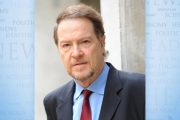
“The Fed spoke and financial markets rallied,” began the Associated Press report on how the stock market responded after the policy-making panel of the Federal Reserve Board issued a statement Tuesday, saying the federal funds rate (the interest banks charge other banks for borrowed money) would be held to 0 to 1/4 percent through the middle of 2013. The Dow Jones industrial average surged more than 429 points, just one day after its biggest decline since 2008.
But the Fed’s influence over the volatile stock market is of short duration and its ability to bolster a sagging economy is illusory. The Federal Open Market Committee’s promise of low interest rates was accompanied by an assessment of current market conditions that look anything but promising. “Indicators suggest a deterioration in overall labor market conditions in recent months, and the unemployment rate has moved up. Household spending has flattened out, investment in nonresidential structures is still weak, and the housing sector remains depressed,” the committee reported. On the plus side, “business investment in equipment and software continues to expand.”
The fed’s low interest rates, however, continue to have little effect on consumer spending. As the New York Times noted, “The Fed already has held rates near zero since December 2008, and the economy is awash in cheap money.” Low interest rates and “cheap money” helped create the “bubble” in the housing and financial markets that led to the last recession. The low rates encouraged homebuyers to borrow more than they could afford and homeowners to take out second mortgages and equity loans to finance a higher level of consumer spending. Today’s debt-ridden consumers, many of them now unemployed, are in no position to borrow, and more than two years after the recession officially ended, businesses are reluctant to hire and expand during a faltering “recovery.”
In a genuinely free market economy, the cost of money would be determined by the laws of supply and demand instead of dictated by a central authority. As the demand for loans increased relative to the supply of available dollars, interest rates would rise, slowing demand. As borrowing slackened, lenders would lower rates to encourage more business. This self-correcting mechanism of the marketplace has been supplanted by a Federal Reserve System that allows the Fed to hold interest rates artificially low during times of high demand, thereby inflating and prolonging an unsustainable economic “boom” that turns into a “bust” when the borrowers are “maxed out” and unable to perpetuate the higher level of spending.
“The Fed also has amassed a portfolio of more than $2.5 trillion in Treasury securities and mortgage-backed securities,” the Times noted, “putting downward pressure on long-term interest rates.” But to buy those Treasury notes and mortgage-backed securities, the Fed simply prints more dollars, which are backed by . ..more printed dollars. Franklin Roosevelt took America off the gold standard in 1933 and Richard Nixon “closed the gold window” to foreign holders of U.S. dollars in 1971, thereby removing all restraints on how much money the Federal Reserve could create. The easy money encouraged more government spending, as the federal budget grew even faster in the Nixon administration than it had under Lyndon Johnson. And it set off a surge of inflation that continued after Nixon was gone, reaching double digits by the end of the decade. Herbert Stein, an economist who served on Nixon’s Council of Economic Advisers, described the Nixon legacy well: “The administration that was against expanding the budget expanded it greatly; the administration that was determined to fight inflation ended by having a large amount of it.”
The prosperity of the Reagan years was built on a sea of red ink, as the national debt tripled in eight years with “the Gipper” at the helm. In an article he wrote last year, David Stockman, Reagan’s first budget director, described the illusion created by artificially induced “prosperity.” “It turns out,” he wrote, “that there was no miracle of economic growth, productivity and prosperity over the last several decades . ..What we had, instead, was serial bubble after bubble — fueled by a tsunami of public and private debt and printing-press money.”
Some would have us believe that the Fed is our protector, a last defense against financial ruin. On last Sunday’s Meet the Press former Federal Reserve Chairman Alan Greenspan described the printing-press money as a guarantee that the U.S. won’t default on its loans. “The United States can pay any debt it has, because we can always print money to do that,” Greenspan said. “So there is zero probability of default.”
But what will happen when foreign lenders grow tired of being paid in an inflated currency with diminished purchasing power? Then we shall see how well the Federal Reserve can rally the stock market—or anything else.



